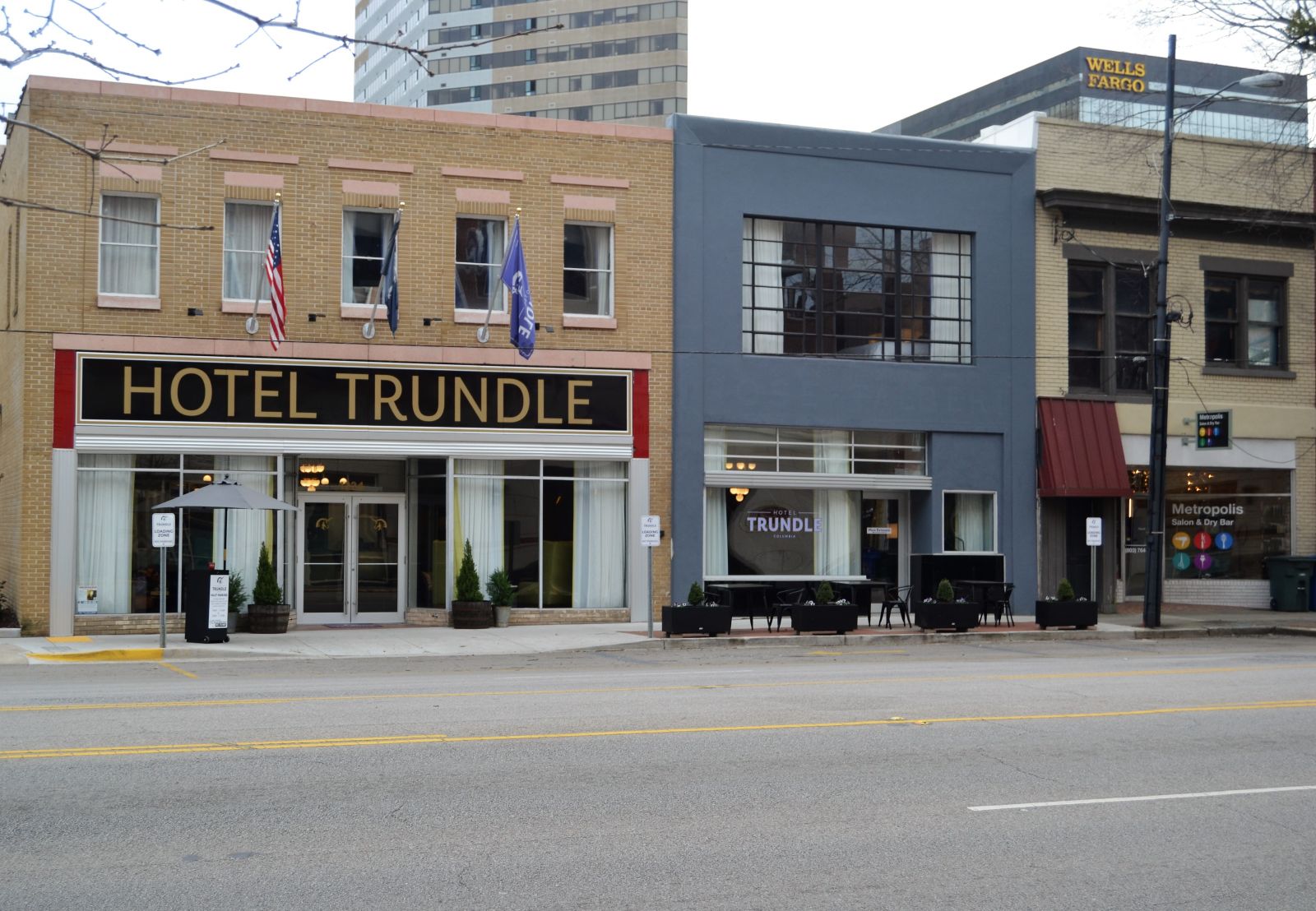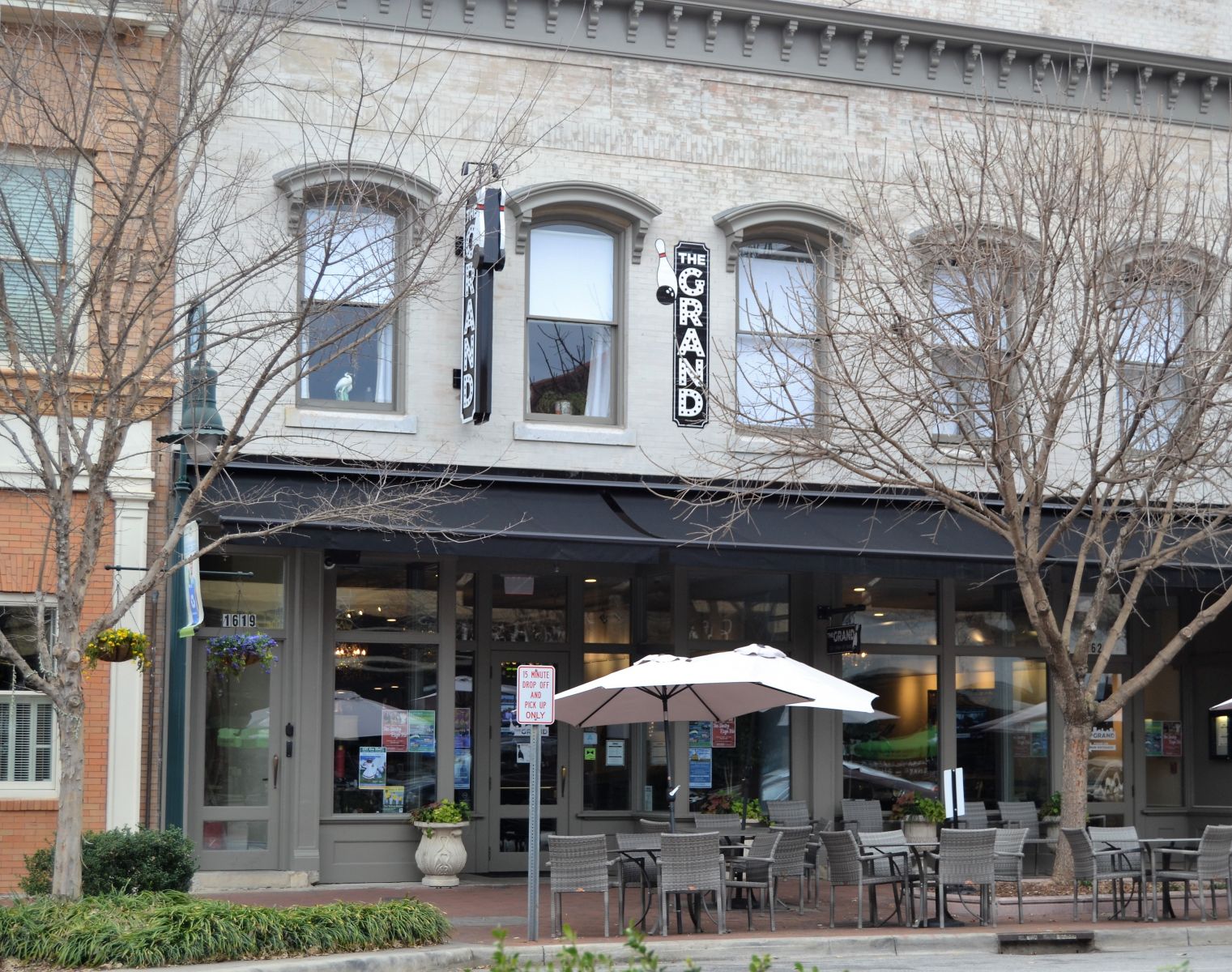Historic projects hinge on intricate numbers game
Melinda Waldrop //February 26, 2019//
Chris Rogers needs only to look out his office window to find inspiration.
Rogers, an attorney with Columbia law firm Rogers Lewis, is also a member of a local limited liability company that scouts the Midlands and beyond for promising development projects, particularly ones that can benefit from federal and state historic tax credit incentives.
“There’s a building that I like over here on the other side of Assembly Street,” Rogers said from a 12th-floor conference room at his firm’s Bank of America downtown office building. While he doesn’t know if the white, three-story building that used to house a real estate brokerage would be eligible for tax credits, “I see it every day, and I’m like, ‘We could really do something with that building.’ ”
A turn to the north produces similar thoughts as Rogers’s gaze falls upon the former Stone Manufacturing building at 3452 N. Main St.
“It’s just sitting there empty,” he said. “It’s a big, empty building that is sort of a blight on the surrounding community. If you can take that building and put something nice in it and put it back to use, it just turns the whole community around.”
 Rogers knows of what he speaks. Rogers Lewis Jackson Mann & Quinn LLC has been behind some of Columbia’s most noteworthy transformations involving historic tax credits, including Hotel Trundle, a boutique hotel born out of three empty properties at the corner of Taylor and Sumter streets that opened last April, and the Hunter-Gatherer at the Hangar, the second location of a popular downtown brewery that landed last January at the Curtiss-Wright Hangar adjacent to the Jim Hamilton-L.B. Owens Airport.
Rogers knows of what he speaks. Rogers Lewis Jackson Mann & Quinn LLC has been behind some of Columbia’s most noteworthy transformations involving historic tax credits, including Hotel Trundle, a boutique hotel born out of three empty properties at the corner of Taylor and Sumter streets that opened last April, and the Hunter-Gatherer at the Hangar, the second location of a popular downtown brewery that landed last January at the Curtiss-Wright Hangar adjacent to the Jim Hamilton-L.B. Owens Airport.
“A lot of what we do is bring the right people together,” Rogers said. “We look for things that nobody else is doing. We don’t try to compete with clients, but we do have a lot of developers who come to us and say, ‘I’d like to do this building. How can you help us make this happen? We understand there are credits.’ That’s the way it usually starts.”
The tax credits range from federal incentives to the Bailey Bill, a tax abatement measure enacted in South Carolina in 1992. The bill allows local governments to lock in a tax assessment based on rehabilitated property’s fair market value prior to renovation for no more than 20 years. South Carolina also offers tax incentives through the Abandoned Buildings Renovation Act, legislation passed in 2013 that allows developers of eligible properties to receive a tax credit equal to 25% of the renovation cost against either state income taxes and corporate license fees or property taxes.
That property tax piece is especially beneficial to projects in Richland County, traditionally home to some of the state’s highest property tax rates, Rogers said.
“It’s really all about the numbers, especially in Columbia,” he said. “The numbers have to work. That’s the bottom line. For developers, you’re not going to do a project unless, No. 1, you can put together enough money to get the project done. No. 2, it’s got to be profitable once you get it done. Nobody’s going to go out and do all that work for nothing.”
BREAKING DOWN THE NUMBERS
To that end, a lot of time is invested in upfront due diligence to make sure a project will pan out.
“We start out with a financial model, a pro forma financial model,” Rogers said. “We look at the capital stack, which is sources and uses. Where’s the money going to come from and what’s it going to cost? That’s the first step. The second step is, once we get this built, what can we expect to receive in rents, and what are our costs going to be? What is the cash flow going to look like after we create this project?”
A hypothetical: Say a project eligible for state and federal historic credits, as well as the state abandoned building credit, has a $10 million budget of eligible cost.
“There’s a 20% federal historic tax credit,” Rogers said. “You can’t sell the tax credits, but (investors) invest in the project as a partner, and in exchange for that investment, they get the bulk of the tax credits and some minimal amount of cash flow from the project. That’s what developers need. A lot of them don’t have the cash and the tax liability to be able use those credit themselves and to put the cash up on the front end. So if we bring in, let’s say a bank, who can use the credits and has the cash to invest, it’s a good partnership. It puts the cash in the project to allow it to go forward, it’s a good investment for the bank or the investor, and it helps the developer get his deal done.”
That $2 million federal credit might go for 75 to 80 cents on the dollar, Rogers said, “so maybe a million-five you get for actual cash investment from your investor from the federal credit alone.” Add to that a 10% state historic tax credit with a market of around 65 cents on the dollar, Rogers said, plus an abandoned building tax credit typically capped at half a million and also going for around 65 cents on the dollar, and “now you’re close to two and a half million dollars out of your $10 million cost in equity, cash that’s coming into the deal,” Rogers said.
Numbers like that will get a bank’s attention, said John Griggs, Synovus region executive for central S.C.
“These tax credits are maybe over and above the amount we’d normally require in equity for a project like this,” Griggs said. “You’ve got a much lower loan-to-cost (ratio) than you do on a conventional project. You still need cash flow. You still need equity. All of the fundamentals to underwriting a deal still need to be there. So that’s not unlike any other real estate project. But I think the fact that this tax credit equity is, a lot of times, over and above traditional equity for real estate deals is very attractive to the banks.”
 Synovus has been involved with historic renovations in the Vista and on Main Street, including The Grand on Main, a boutique bowling alley/fine dining restaurant which opened last January at 1621 Main St. in the heart of downtown’s booming superblock. The block also boasts a newly opened Topgolf Swing Suite at The Venue on Main and Lula Drake, a wine parlor and event space that Rogers and company were involved in developing as part of the Main Street district’s ongoing revitalization.
Synovus has been involved with historic renovations in the Vista and on Main Street, including The Grand on Main, a boutique bowling alley/fine dining restaurant which opened last January at 1621 Main St. in the heart of downtown’s booming superblock. The block also boasts a newly opened Topgolf Swing Suite at The Venue on Main and Lula Drake, a wine parlor and event space that Rogers and company were involved in developing as part of the Main Street district’s ongoing revitalization.
“These are areas we really want to see succeed,” Griggs said. “We’re in this market. Our office is right here on Main and Gervais. We’ve got a vested interest in Main Street and the Vista, because we’re here. It also takes a really creative developer to put these things together, because the costs to rehab these facilities are more expensive than if you were building from the ground up.”
While the tax credits help mitigate some of that cost, the process — which requires layers of IRS third-party investor compliance, among the plethora of paperwork — was not readily embraced by would-be financiers when rehabilitation projects first came into vogue, Rogers said.
“Ten years ago, nobody understood tax credits,” Rogers said. “You went to a bank and they looked at you like you were crazy. They were like, ‘Well, who’s paying for this? Who’s losing? Is this some kind of scam?’ It would take a lot of education. Most of the banks have been exposed to it now, and they understand it. The structuring of the transaction is more intense and more sophisticated, so it involves some more work on the front end, but when you’ve got that kind of money coming in as equity, it helps the bank. Obviously if there’s less debt and more equity, it makes the bank feel more secure.”
REDEFINING HISTORIC
Projects that may qualify for historic tax credits are not always sprawling, dusty structures from yesteryear. In 2018, Rogers Lewis Jackson Mann & Quinn completed a renovation of a circa 1963 hotel in Myrtle Beach that Rogers said is part of a growing trend.
“That’s kind of the new wave of what we’re looking at, is those mid-century modern buildings that nobody really thinks of as historic, but they are now,” Rogers said. “We’d like to do more of those in Myrtle Beach. … We’d like to take some of those run-down, mom-and-pop motels and make them really cool, retro, higher-end hotels that have a cool vibe to them. If you do enough of those, it changes the entire environment, the whole area.”
The LLC has also been involved in renovating shut-down mills in the Upstate.
“When somebody goes into one of those mills and spends $30 million and makes it new and shiny and beautiful, it has a way of turning the whole community around,” Rogers said. “People go in there and start buying the homes around it and fixing them up. It just changes everything. New businesses come in. We’ve seen it happen over and over again.”
While Rogers specializes in helping investors navigate the tax labyrinth of renovations, Lewis helps guide the historic application and certification process.
“Both pieces are tremendously important. You can’t have either one without the other,” Rogers said. “But if you don’t do it right … we get calls all the time after people have finished their project, and they’re like, ‘They’re telling me I can’t get the credit or I didn’t do this,’ and we’re like, ‘I’m sorry. You should’ve called us a year ago and we would’ve told you right away you’ve got to do this before you get started.’ It’s frustrating to get those calls, because they’re usually very simple things that people just didn’t know they had to do.”
Even when all the boxes are checked in the beginning of a project, the detailed nature of the historic beast, including design features that must be exact specifications, can present ongoing challenges.
“We find ourselves getting involved in a lot of issues that you wouldn’t think of lawyers being involved in,” Rogers said. “If a problem comes up, even if it’s a construction issue but it involves some historic element of the building, or if there’s a problem with the city or there’s some approval that’s being held up … we get involved in a lot of those things. We also do a lot of the real estate side as well, like loan closings and things, because the tax credits affect that piece of it so much, and there’s always a bunch of problems that come up in that process.
“We’re problem-solvers more than anything else. When we’re trying to get a project done, I think of it as somebody just keeps throwing up roadblocks, and we just keep clearing them. You just have to keep doing that until you get to the end.”
But as intricate as shepherding a historic renovation from start to finish can be, the satisfaction in witnessing the transformation can be its own reward.
“I just like seeing it turn into the end result,” Griggs said. “I like seeing the construction and walking through it. As a banker, I don’t know that we always have the same vision that these developers have. Seeing their vision come into play and knowing we helped, and that we helped the community, just makes it very fulfilling.”
This story first appeared in the Feb. 25 print edition of the Columbia Regional Business Report.
-

















